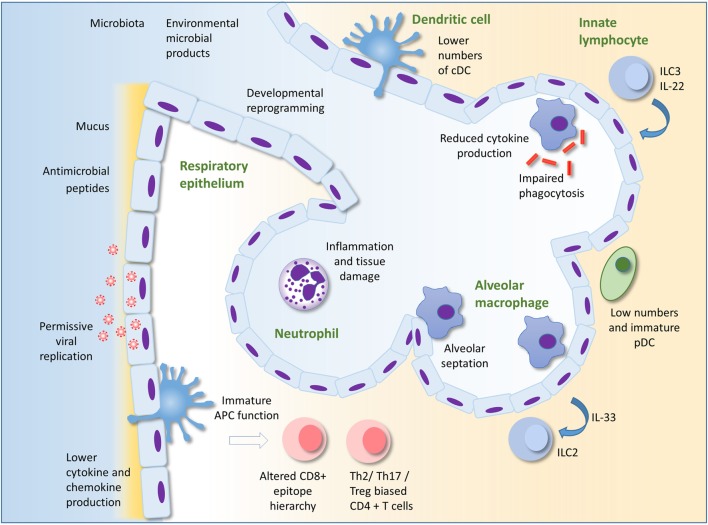Figure 1.
Innate immunity to infection in the lung in early life. Alveolar macrophages (AM) are the most numerous leukocyte in the lungs in early life. Reduced cytokine production and phagocytic ability in AM in early life compared to those of adults could underlie susceptibility to infection. AM also promote pre- and post-natal lung development and remodeling. The respiratory epithelium protects against infection through the production of mucus and antimicrobial peptides. Production of type I IFNs may be lower in infant than adult epithelial cells, perhaps permitting greater viral replication. Epithelial cells may interact with innate lymphocytes to both initiate and regulate inflammation. Developmental reprograming in the epithelium in early life may also alter the nature of the epithelial response to infection. There are low numbers of pDC in the lungs compared to adults. Recruitment of neutrophils to the lung occurs less readily in early life compared to adults in some circumstances, but in other situations, excessive recruitment of inflammatory cells can lead to lung inflammation, tissue damage, and impairment of gaseous exchange. Immaturity and lower numbers of dendritic cells, the environment as well as intrinsic differences in T cells in early life may result in the development of skewed helper T cell responses and an altered epitope hierarchy in CD8+ T cells. Innate immunity in the lung in early life is influenced by acquisition of the microbiota, exposure to microbial products and other environmental factors, as well as the infant genome. Adapted by permission from Macmillan Publishers Ltd: Nature Reviews Immunology (45), copyright 2014.

